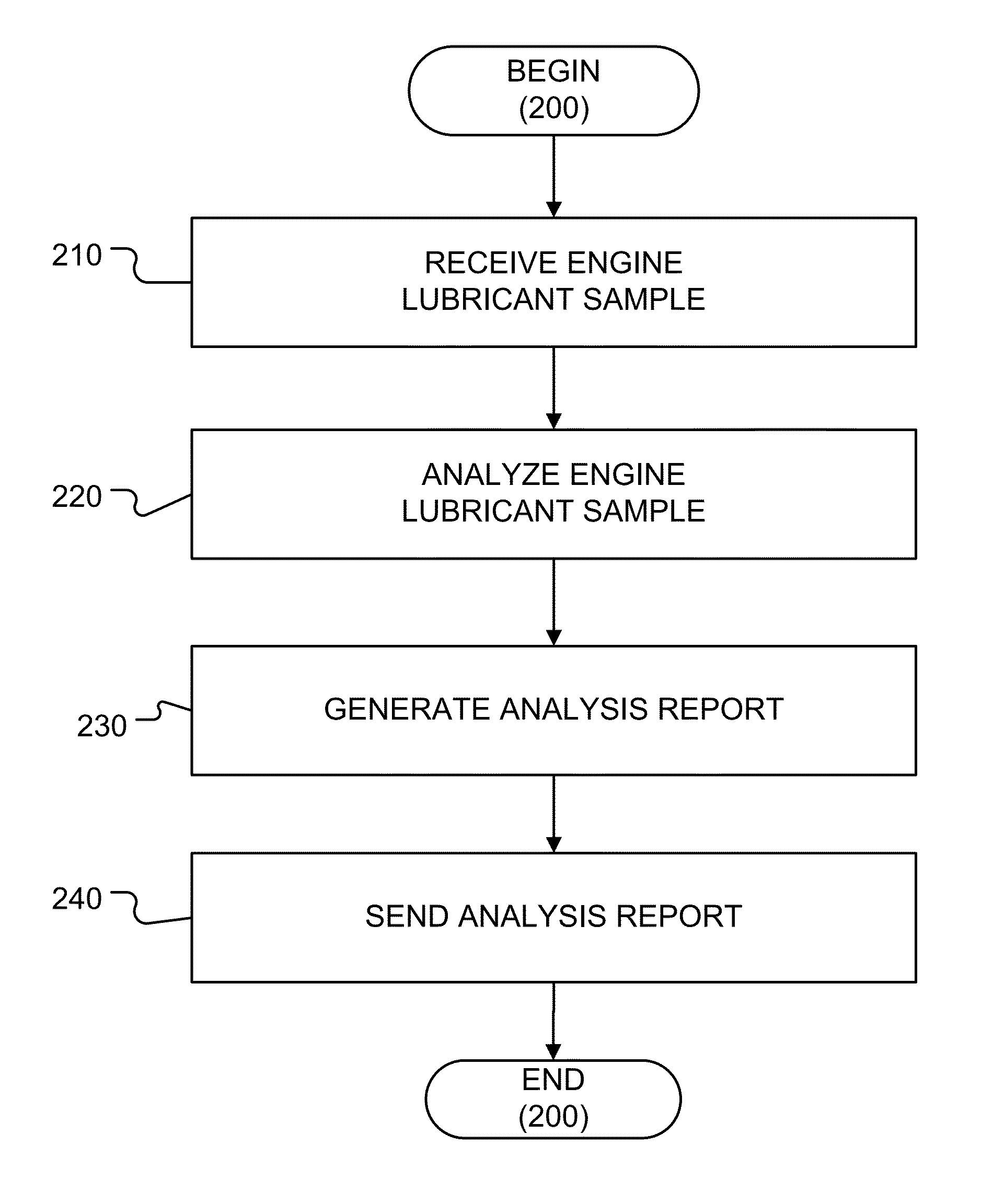System and method for determining a lubricant discard interval
a technology of lubricant and interval, which is applied in the field of system and method for determining the interval of lubricant, can solve the problems of reduced power output of the engine, wear on the moving parts, etc., and achieves the effects of optimizing the overall cost, minimizing downtime, and cost effectiv
- Summary
- Abstract
- Description
- Claims
- Application Information
AI Technical Summary
Benefits of technology
Problems solved by technology
Method used
Image
Examples
example
[0106]A locomotive engine is subject to maintenance every 92 days. A sample analysis at 184 indicates that that the oil has 61 days of useful life remaining. The system 100 is used to determine that the useful life can be increased to 92 days by removing 10% of the used oil and replacing with fresh oil. A maintenance manager obtains the output from the system and may then determine whether it is more advantageous to change the oil on that unit at 184 days or draining off 10% of the oil (and adding 10% fresh oil to the unit) and continuing on to 276 days of service before changing the oil.
[0107]According to an aspect of the disclosure, a computer readable medium is provided that contains a computer program, which when executed in, for example, the server 130 (or the computer 120), causes the process 500 in FIG. 16 to be carried out. The computer program may be tangibly embodied in the computer readable medium, which may comprise a code segment or a code section for each of the steps ...
PUM
 Login to View More
Login to View More Abstract
Description
Claims
Application Information
 Login to View More
Login to View More - R&D
- Intellectual Property
- Life Sciences
- Materials
- Tech Scout
- Unparalleled Data Quality
- Higher Quality Content
- 60% Fewer Hallucinations
Browse by: Latest US Patents, China's latest patents, Technical Efficacy Thesaurus, Application Domain, Technology Topic, Popular Technical Reports.
© 2025 PatSnap. All rights reserved.Legal|Privacy policy|Modern Slavery Act Transparency Statement|Sitemap|About US| Contact US: help@patsnap.com



